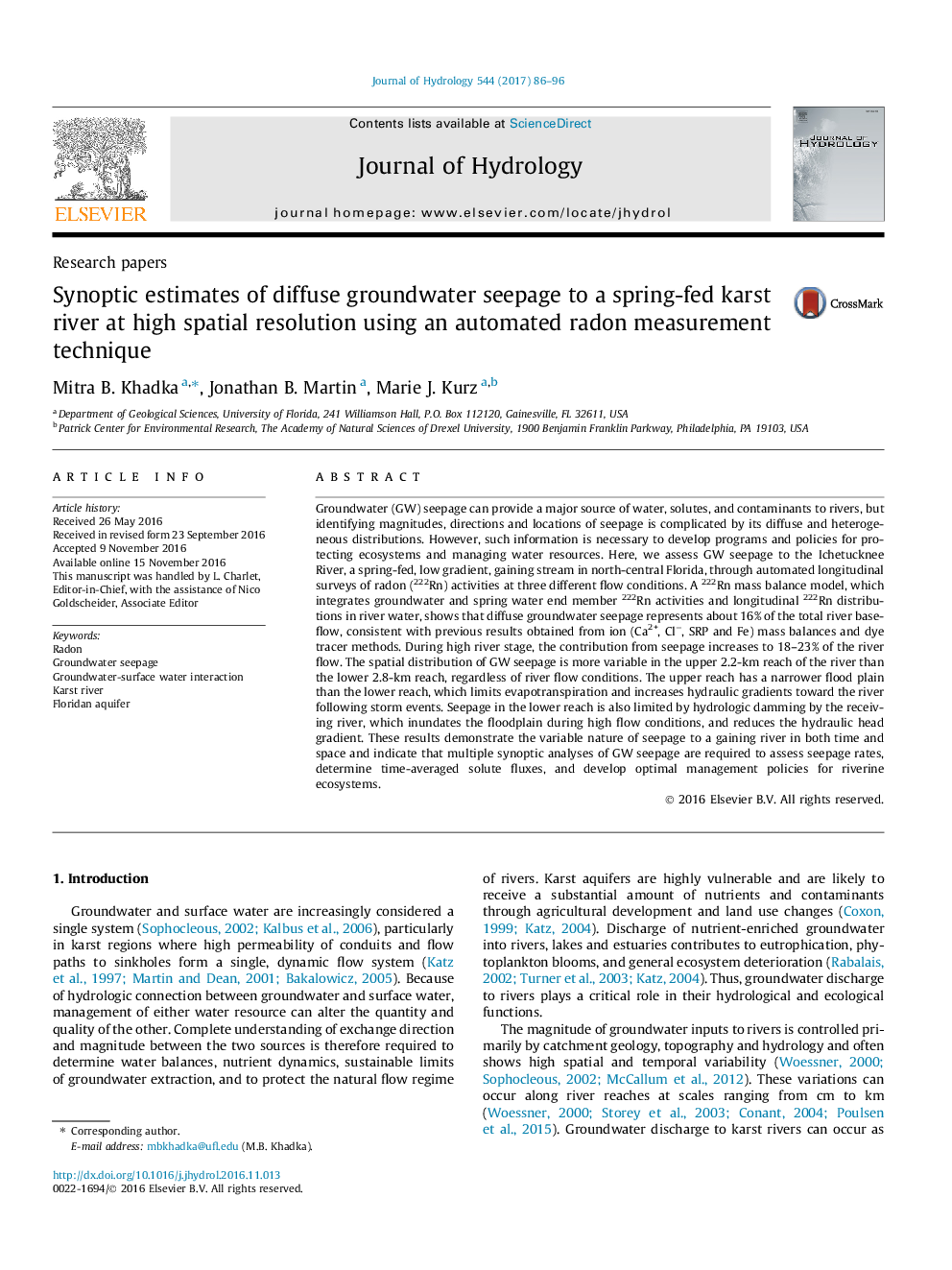| Article ID | Journal | Published Year | Pages | File Type |
|---|---|---|---|---|
| 5771328 | Journal of Hydrology | 2017 | 11 Pages |
â¢We identified variable nature of GW seepage using an automated radon measurement.â¢GW seepage to rivers increases following rainfall events.â¢River geomorphology and hydrology control location and magnitude of GW seepage.â¢The automated radon technique provides near-synoptic and rapid assessment of GW seepage.â¢Near-synoptic assessment suggests discharge-recharge relations alter GW seepage.
Groundwater (GW) seepage can provide a major source of water, solutes, and contaminants to rivers, but identifying magnitudes, directions and locations of seepage is complicated by its diffuse and heterogeneous distributions. However, such information is necessary to develop programs and policies for protecting ecosystems and managing water resources. Here, we assess GW seepage to the Ichetucknee River, a spring-fed, low gradient, gaining stream in north-central Florida, through automated longitudinal surveys of radon (222Rn) activities at three different flow conditions. A 222Rn mass balance model, which integrates groundwater and spring water end member 222Rn activities and longitudinal 222Rn distributions in river water, shows that diffuse groundwater seepage represents about 16% of the total river baseflow, consistent with previous results obtained from ion (Ca2+, Clâ, SRP and Fe) mass balances and dye tracer methods. During high river stage, the contribution from seepage increases to 18-23% of the river flow. The spatial distribution of GW seepage is more variable in the upper 2.2-km reach of the river than the lower 2.8-km reach, regardless of river flow conditions. The upper reach has a narrower flood plain than the lower reach, which limits evapotranspiration and increases hydraulic gradients toward the river following storm events. Seepage in the lower reach is also limited by hydrologic damming by the receiving river, which inundates the floodplain during high flow conditions, and reduces the hydraulic head gradient. These results demonstrate the variable nature of seepage to a gaining river in both time and space and indicate that multiple synoptic analyses of GW seepage are required to assess seepage rates, determine time-averaged solute fluxes, and develop optimal management policies for riverine ecosystems.
